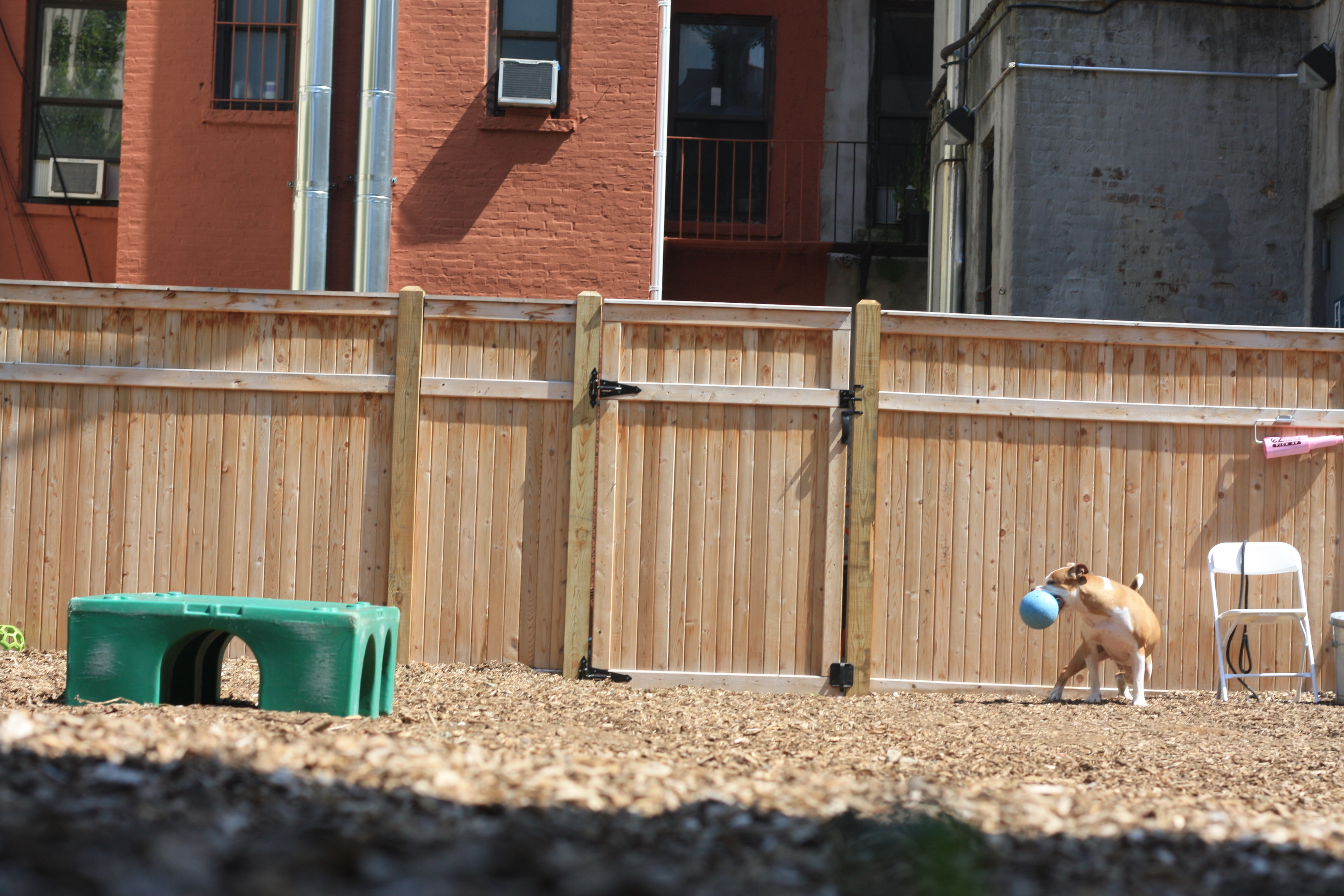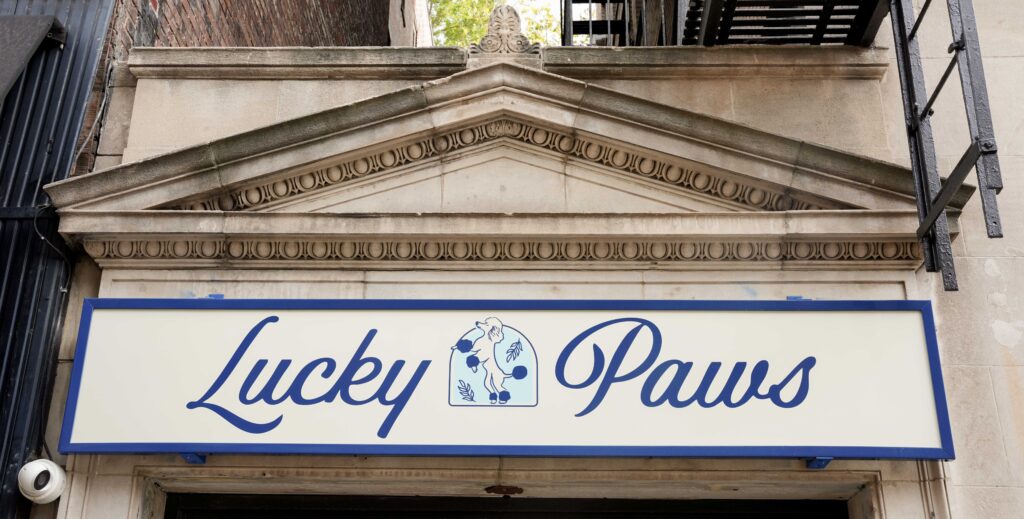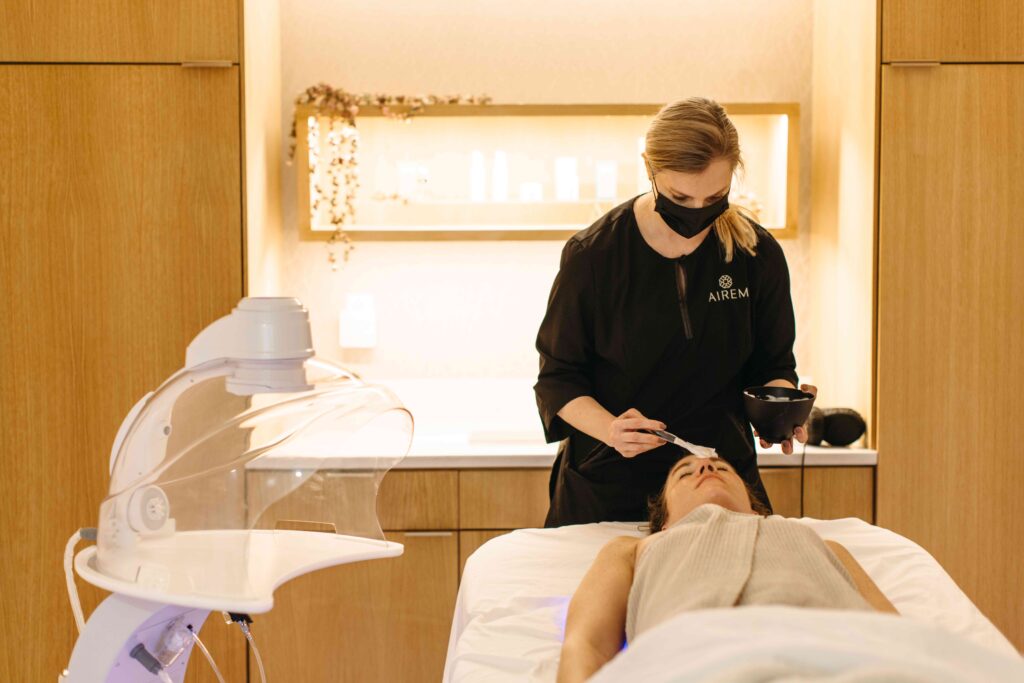The first dog I had got kicked out of obedience school on day one. My second dog was the most stubborn I’ve ever known (he once laid down in the middle of a busy street and refused to get up). Of the two I’m left with now, the 11-year-old barks so much my ears hurt and the other jumps high enough that her nose touches my forehead. Many pet parents know their dogs aren’t perfect (we love them anyway), but luckily the majority of their so-called flaws can be corrected.
I’m someone who has always been cautious when it comes to training facilities. The aforementioned 11-year-old once returned home from daycare soaking wet because they sprayed her with a water bottle every time she barked. However, I was pleasantly surprised to learn about positive reinforcement only facilities—including Northern New Jersey’s own Instinct Englewood.
Instinct Dog Training was founded in 2009 in Manhattan by Sarah Fraser and Brian Burton. Since its inception, Instinct has gone national as a dog behavior & training company that’s made up of certified behavior consultants and board-certified veterinary behaviorists. What makes them different is their positive reinforcement platform, which means they treat every dog and its owner with respect, compassion, kindness and empathy.
Most recently, they opened up Instinct Englewood in 2018 with board-certified veterinary behaviorist Dr. Emily Levine, DACVB at the helm alongside Suze Cullinan, a Certified Dog Behavior Consultant (IAABC) and the New Jersey location’s co-owner and president. They offer not only customized training solutions (behavior modification, obedience and manners, puppy development) but boarding and training camps, as well as private lessons. I had the chance to speak with Cullinan who shared with me a bit about how she got her start, more on Instinct Englewood and what “positive reinforcement” really means.
 Tell us a bit about yourself and what got you interested in becoming a dog trainer?
Tell us a bit about yourself and what got you interested in becoming a dog trainer?
I actually come from a background in Field Operations in the healthcare arena. With my own dogs experiencing behavior problems, I became a trainer part-time and got really interested in dogs who were also struggling. About three years ago, I took the leap and went into dog training full-time. I worked in the shelter and rescue worlds before going on to work for Instinct Dog Training in Manhattan. I became a Certified Dog Behavior Consultant for them and I really love it—they do amazing work with positive reinforcement.
And now you’ve gone to become the co-owner and president of Instinct Englewood, is that right?
Yes! They [Instinct] were looking at franchising and because of my business and training background, we started talking. As a result, last December we opened the first franchise here in Englewood, New Jersey.
How’s that been going so far? Was positive reinforcement training something you were familiar with before working with Instinct?
Yeah, it was and I had actually been practicing it for a long time. What I found to be true in New Jersey, and really throughout the New York metropolitan area, is that there aren’t a lot of positive reinforcement training facilities. There are a lot of positive reinforcement trainers that work independently and give lessons to maybe one or two dogs in their home, but finding a facility that could handle the volume and have helper dogs and all the other proper tools you need is rare.
There was definitely a big need for pet owners who were either going away on vacation or whose dogs who had significant enough behavior issues that they needed to be “sent away to camp”—or stay for an extended, immersive experience to try to help reshape the behavior their owners were concerned about.
 What is the role of positive reinforcement in changing a dog’s attitude and behavior? Can you explain to our readers a bit about what that entails?
What is the role of positive reinforcement in changing a dog’s attitude and behavior? Can you explain to our readers a bit about what that entails?
Just like human interaction, if dogs are rewarded for something and you praise them and give them a treat, the more likely they are to offer that behavior. So positive reinforcement focuses on ‘what do I want this dog to do?’ and then heavily rewarding them when they do it so that the undesirable behavior fades over time. A basic example could be something as simple as a dog running up to you and sitting instead of jumping. The jumping action doesn’t get rewarded, but sitting down in front of you does.
What are some of the alternative methods to positive reinforcement?
Many trainers use what we call “aversive” techniques which can include a shock collar or if the dog’s jumping, for example, could be a knee to the chest or yanking the dog down. Which, by the way, is human—you’re frustrated, and everybody trains differently. But there are really two types of training. One is shutting down the behavior as it’s occurring, and the other, which is what I do, works to prevent the unwanted behavior from occurring at all.
What are the most common reasons dog owners come to you?
The number one reason is leash reactivity, meaning when you’re walking your dog outside on leash and they see people, dogs, skateboards, or all of the above, they start leaping around and lunging. Sometimes they’re growling and snarling or other times it’s because they’re just so happy. That can make it really difficult to walk them.
Second, we see a lot of dogs with separation anxiety. We work very closely with veterinarians because often these dogs need medication. If they’re left alone, they can actually hurt themselves because they’re so distressed.
How should one go about picking a trainer?
Every dog owner should interview a perspective trainer very carefully. Find out if they use positive reinforcement only or if they use a shock collar or prongs. Find out what their certifications are and whether they come from an educational background or have practical experience.
Do you have any advice to new pet parents?
Always remember to go slow, let the puppy settle in and bond with your family first. You don’t need to throw the dog a party when it comes home or take it straight out to the farmers’ market. Just look for good opportunities to socialize, like a playdate with a friend’s friendly dog. It doesn’t have to be a trip to the dog park.
Photos by Instinct Englewood








